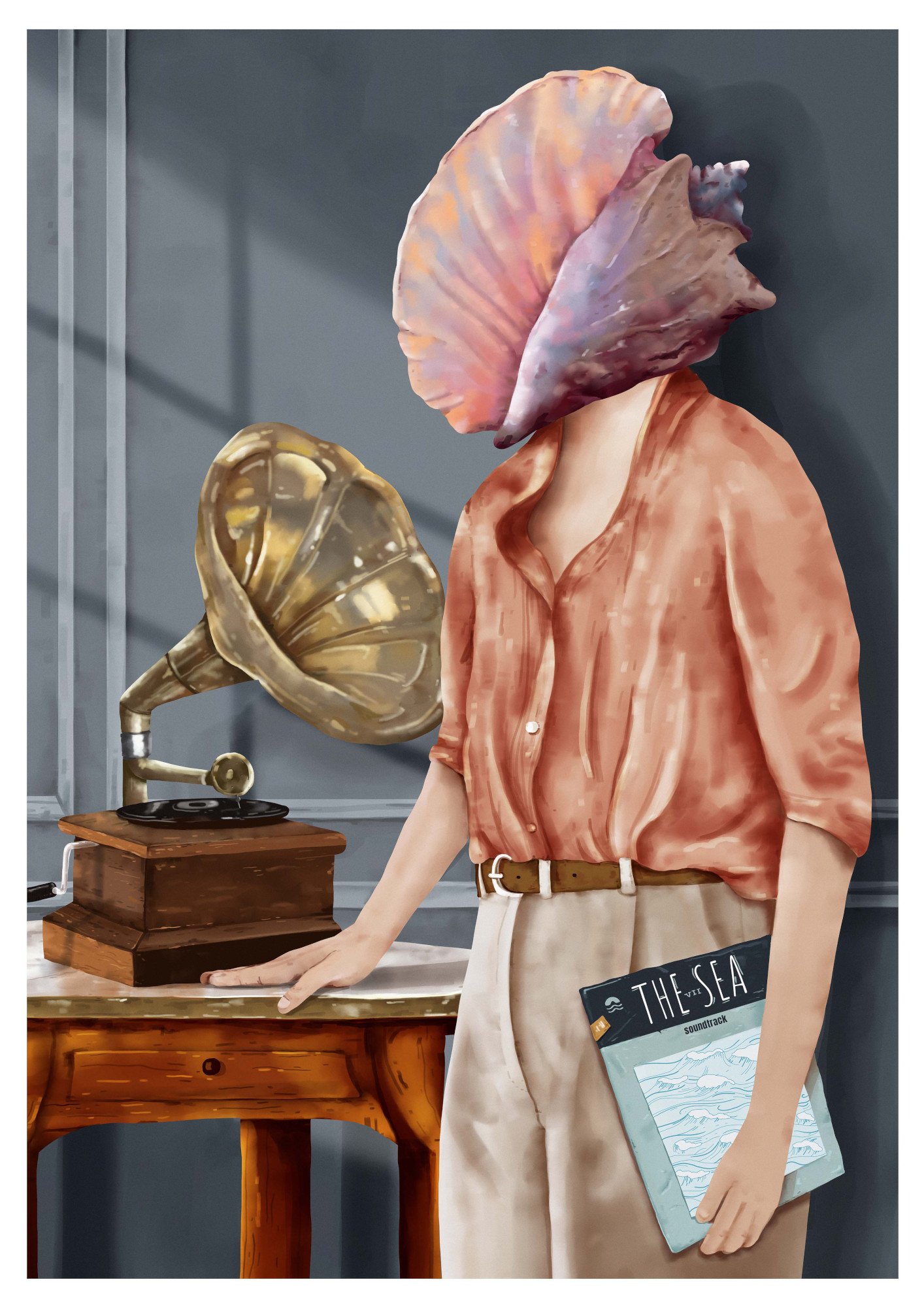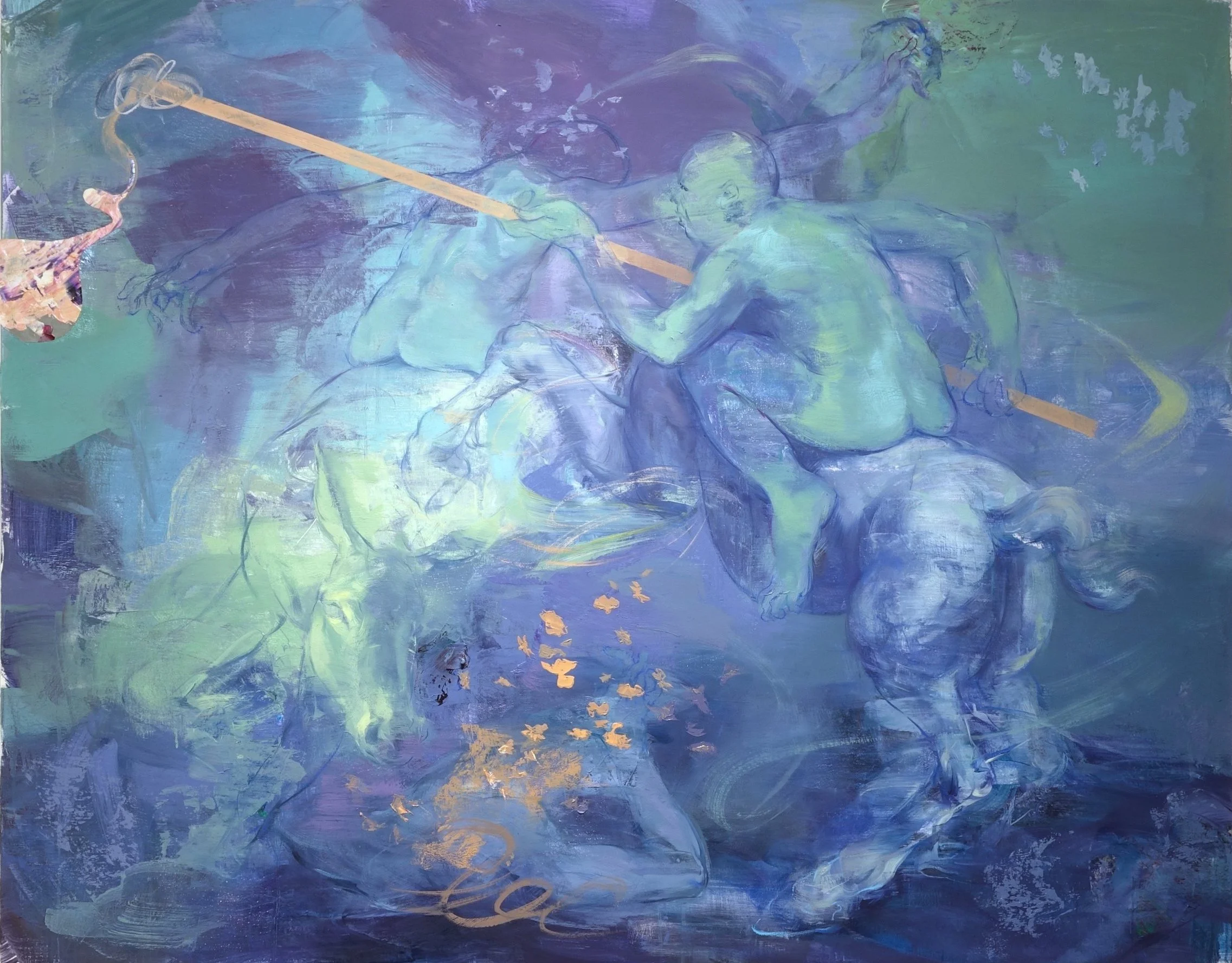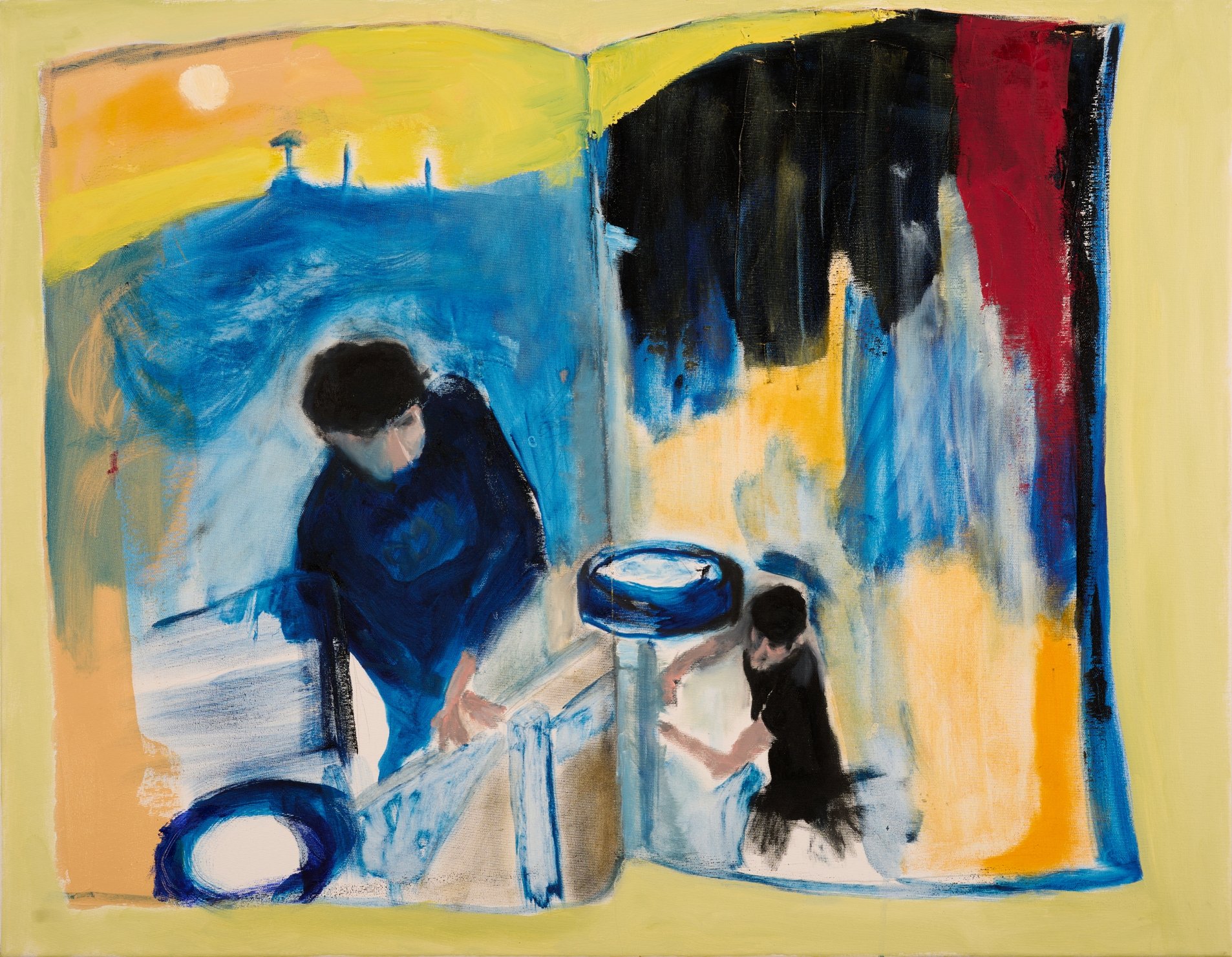10 Questions with Rafael Triana
Rafael Triana is a multidisciplinary artist. His work combines performance, video art, installation, and digital illustration. He was born in 1988 in the province of Ciego de Avila, Cuba. After his postgraduate studies at the School of Fine Arts of Havana (ISA), where he obtained the Gold Diploma in Set Design, he settled in Paris in 2015.
Rafael Triana - Portrait
PARALLEL | Project Description
PARALLEL is a series of digital illustrations that respond to current human relations issues. This series addresses the difference, opposites, and social inequalities and seeks a link to connect to contemporary times.
I use different techniques such as collage, traditional drawing, charcoal, and digital art. Digital art allowed me to combine all my techniques into one, developing brushes, textures, and atmospheres, now from a computer.
My illustrations have always been an ironic and poetic reflection of real life. I appropriate conventions and common situations to create a new reality. I imagine life on pause, like a photograph before the click, like a theater scene where we are all extras waiting to play the main role.
I see my art as a defense mechanism against reality to combat the circumstances of life.
PARALLEL 10, Digital painting, 120x90 cm, 2022 © Rafael Triana
INTERVIEW
First of all, tell us something more about you; how did you start working with illustrations? And when did you realize you wanted to become an artist?
Well, I am 33 years old. I was born in Cuba, one of the last communist countries in the world. Although it may not seem like it, that has been a constant influence in my life, both personally and in art. I grew up in a country town surrounded by animals and people, all belonging to the same owner. I was always the weird kid on the block. Too many hairs to fit into that bald world. From a very young age, I locked myself in my room to draw and paint on whatever I found: newspapers, Russian magazines, and the walls of the building. I continued my studies, and at the age of 15, I entered the art academy in my province, Ciego de Avila, thanks to a program of the revolution to make artists. I studied painting and engraving for five years. When I finished high school, I entered the only art university in Cuba, El ISA in Havana. It was there that I really understood the importance of being an artist. It's not about seeing the world differently, that's what microscopes are for. It is about understanding that everything an artist did had meaning for others. When I was able to buy my first computer, I began to make my first numerical illustrations and sneak into the digital world, which continues to impress me to this day. I was always very interested in illustrations for their narrative strength and their ability to narrate stories or events from a poetic and direct perspective.
You were born and raised in Cuba, and moved to Paris after your graduation. How do these two different realities influence your work?
Yes, indeed, in 2015 I moved to Paris for love. Almost like a kind of lifesaver, that person took away the dust and the termites that ate my childhood. Life after graduation is not easy in any country in the world, now I understand. But in Cuba, it is impossible, even more so if you were not born in Havana. Regionalism and high rental prices with a minimum salary of 10 euros a month, which is not even enough to buy an almanac and know when the hell the month is over, turned me into a beggar artist. When I arrived in Paris, it was an extreme blow. The culture, the food, the Nutella, the light, especially the light full of freedom. And so I started again, from 0 and minus 0 degrees, to try to create. Everything is very different. At first, I created works with the theme of Cuba, criticism of the regime, and concepts of social surveillance. But I quickly understood that nobody here cared about the island and if Fidel was a dictator full of dandruff or if the boardwalk was nothing more than a zipper that leaves us inside like penises. So it was very difficult to translate my work and cut it in two so that it would fit here and be strong in Cuba. I made several video series and installations, and over time I stopped thinking about Cubanness to create a more universal art. At least that's what I try.
PARALLEL 3, Digital painting, 70x90 cm, 2022 © Rafael Triana
In your statement, you quote universal history, myths, and everyday life as your sources of inspiration. How do you incorporate them into your production?
I was always passionate about history books, myths, and legends. At the University, I read a lot, and I found it interesting to find these stories in everyday life. I imagined those Roman and Greek heroes lining up to buy bread in Havana or building a boat with a Chevrolet engine to go to Miami. I believe that history is immediate and recyclable. In my work, I try to bring that cosmology to everyday scenes. My characters are bad heroes and very good villains.
Your artist statement says, "It is very difficult to grow in a world populated by bonsai trees". It sounds like a very relatable statement, but can you explain to us what it means to you?
Yes, I think that there are two types of social classes in the world of contemporary art: trees and plastic flowers. One needs water to survive, and the other needs to be observed and ask questions, to verify if he is true. I realized how difficult it is to establish yourself as a free man and artist. It is an ordinary metaphor of me and the system, the art institution, and the artist. The difference between standing out from everyone else or everyone else taking a step back so you can move forward.
PARALLEL 8, Digital painting, 120x90 cm, 2022 © Rafael Triana
PARALLEL 9, Digital painting, 120x90 cm, 2022 © Rafael Triana
Let's talk about your series "Parallel". How did you develop this series? And what messages do you want to convey?
I started Parallels 1 year ago, sitting on the bus that takes me home from work. I am the artistic director of an audiovisual company in Paris. In 2 and a half hours spent in transport per day, I discovered that this time was not wasted. With the people on the bus, I began to imagine those tired and sweaty legends and myths piled up in a time machine. With this series, I began to make paradoxes and metaphors about social differences, opposite poles, and the individual's transgression within the system. Sometimes funny, sometimes banal, and above all critical. Paralelos was and is a kind of catharsis for me.
For the series you used different techniques, such as collage, traditional drawing, charcoal, and digital art. How did you choose them, and what do they represent for you?
I started the series by doing sketches and charcoal drawings. Over time, I explored collage and realized that digital art was the appropriate means of representation. So I concentrated on composing the images on the computer, but always using the academic drawing and painting techniques, now with a digital brush.
What about your inspiration? Do you have any artist that inspired you visually or conceptually, when working on this series?
I come from the world of video and conceptual art. My references have always been Francis Alÿs, Marcel Duchamp, Marina Abramovich, Jasper John, Gabriel Orozco, and many more. Within illustration or still images, I am in love with the work of Dali, Andy Warhol, and Murakami. Although I study the trends and artists that I follow and respect every day, I started the series a bit blindly. I wanted to get out of my comfort zone. So now I'm still looking for information about this technique and absorbing all the information I can.
PARALLEL 4, Digital painting, 70x90 cm, 2022 © Rafael Triana
PARALLEL 7, Digital painting, 70x90 cm, 2022 © Rafael Triana
What is your ultimate career goal? Is there a technique you would like to experiment with? Or a project you have been meaning to start?
I'm not very good at setting goals, or I'm afraid of it, I don't know. I was always someone's target. I think it's the same as every emerging artist, being able to be recognized, represented, and exhibit the work I do so that others can see it and that it's useful for something. I have millions of projects exposed on my hard drive; some started, some finished, and almost all abandoned. I am passionate about sculpture and installation. I think that's my biggest aspiration, to bring my illustrations to the real world.
Lastly, what are you working on now, and what are your plans for the future?
I am currently working on the Paralelos series, making sketches of new images. In addition, I recently started the ALPHA project. It is a series where I seek to find a relationship between digital art and physical prints. The works are illustrations of shapes on transparent backgrounds, playing with the concept of PNG. The project works from the absurd with a pop aesthetic, operating the concept of the legitimacy of art and the limits that comprise it.
























